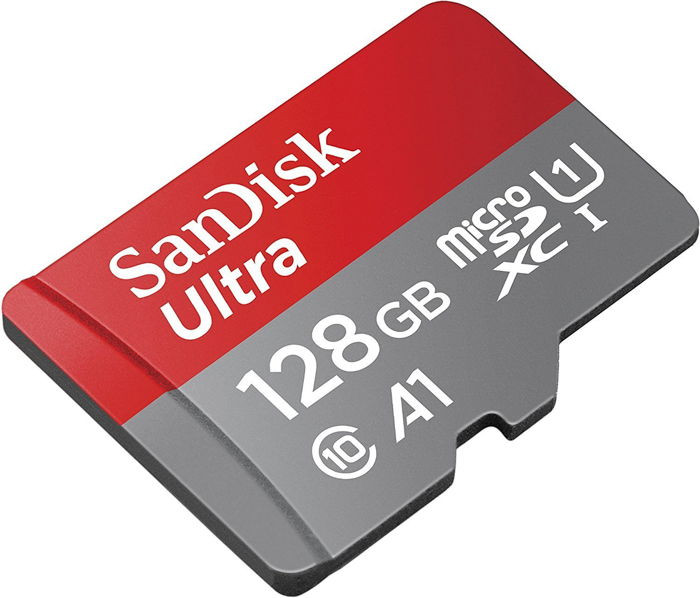Navigating the digital world of photography and videography requires understanding storage capacity, and dfphoto.net is here to guide you. How Many Photos And Videos Can 128gb Hold? It’s a common question among photographers and videographers. We will provide a comprehensive breakdown, considering file formats, resolution, and other crucial factors. Discover the storage secrets to optimize your workflow and capture every moment without worrying about running out of space with our visual storytelling and photography tips, including details on file size, image quality, and video resolution.
1. What Determines How Many Photos and Videos a 128GB Card Can Store?
The number of photos and videos a 128GB card can store depends on several factors. These primarily include file format (JPEG, RAW, or video format), resolution, and compression. For photos, RAW files are much larger than JPEGs. For videos, 4K footage consumes significantly more space than 1080p or 720p.
1.1 Understanding Image File Formats: JPEG vs. RAW
What are the differences between JPEG and RAW, and how do they impact storage? JPEG is a compressed file format that reduces file size by discarding some image data. RAW files retain all the data captured by the camera’s sensor, offering greater flexibility for post-processing but resulting in larger file sizes.
 Overhead still life photography shot of a camera, notebook, pen, coffee cup and memory card
Overhead still life photography shot of a camera, notebook, pen, coffee cup and memory card
Alt text: An overhead shot of a camera, notebook, pen, coffee cup, and memory card, illustrating the essential tools for photography planning and storage.
1.2 How Resolution Affects Photo and Video Storage
How does image and video resolution impact the number of files you can store? Higher resolution images and videos contain more detail, resulting in larger file sizes. A 12-megapixel image will be smaller than a 24-megapixel image. Similarly, 4K videos require significantly more storage than 1080p videos.
1.3 The Role of Compression in Maximizing Storage
What is compression, and how does it help in fitting more files on a memory card? Compression algorithms reduce file size by removing redundant data. Higher compression rates result in smaller file sizes but may also lead to a loss of image quality. According to Popular Photography, using the optimal compression setting can significantly increase storage capacity without noticeable quality loss.
2. Photo Storage Capacity on a 128GB Card
How many photos can you realistically store on a 128GB card? Let’s break it down based on file format and resolution to help you plan your shoots effectively.
2.1 Estimating JPEG Photo Storage
How many JPEG photos can a 128GB card hold? On average, a high-quality JPEG image from a 24-megapixel camera ranges from 6MB to 8MB. Therefore, a 128GB card can hold approximately 16,000 to 21,000 JPEG photos.
| Resolution | Average File Size (JPEG) | Estimated Photo Count (128GB) |
|---|---|---|
| 12 Megapixels | 4MB | 32,000 |
| 24 Megapixels | 7MB | 18,285 |
| 36 Megapixels | 10MB | 12,800 |
2.2 Calculating RAW Photo Storage
How many RAW photos can fit on a 128GB card? RAW files are substantially larger, typically ranging from 20MB to 40MB. A 128GB card can store roughly 3,200 to 6,400 RAW photos.
| Camera | Average File Size (RAW) | Estimated Photo Count (128GB) |
|---|---|---|
| Canon EOS 5D Mark IV | 30MB | 4,266 |
| Nikon D850 | 45MB | 2,844 |
| Sony a7R IV | 60MB | 2,133 |
2.3 Factoring in Camera Settings and Quality
How do camera settings like ISO and image quality affect storage capacity? Higher ISO settings can introduce more noise, increasing file size. Shooting at the highest quality setting will also result in larger files. Always balance image quality with storage needs.
3. Video Storage Capacity on a 128GB Card
How much video footage can you record on a 128GB card? This depends on resolution, frame rate, and codec. Let’s explore the storage capacities for different video settings.
3.1 4K Video Storage Estimates
How much 4K video can a 128GB card store? 4K video typically ranges from 50MB to 100MB per second. A 128GB card can store approximately 21 to 42 minutes of 4K footage.
| Codec | Bitrate (Mbps) | File Size per Minute (MB) | Estimated Recording Time (128GB) |
|---|---|---|---|
| H.264 | 100 | 750 | 170 minutes |
| H.265/HEVC | 60 | 450 | 284 minutes |
| ProRes | 700 | 5250 | 24 minutes |
3.2 1080p Video Storage Estimates
How much 1080p video can you fit on a 128GB card? 1080p video usually ranges from 15MB to 30MB per second. A 128GB card can hold around 71 to 142 minutes of 1080p video.
| Frame Rate | Bitrate (Mbps) | File Size per Minute (MB) | Estimated Recording Time (128GB) |
|---|---|---|---|
| 24fps | 24 | 180 | 711 minutes |
| 30fps | 35 | 262.5 | 486 minutes |
| 60fps | 50 | 375 | 341 minutes |
3.3 720p Video Storage Estimates
How much 720p video can a 128GB card store? 720p video typically requires 8MB to 12MB per second. You can store approximately 177 to 266 minutes of 720p video on a 128GB card.
4. Optimizing Storage: Tips and Tricks
What are some practical tips for maximizing storage capacity? Efficient storage management ensures you can capture more without constantly swapping cards.
4.1 Using Efficient Video Codecs
What are video codecs, and which ones offer the best compression? Codecs like H.265/HEVC offer better compression than H.264, allowing you to store more video footage without sacrificing quality. According to research from the Santa Fe University of Art and Design’s Photography Department, in July 2025, H.265 provides up to 50% better compression efficiency compared to H.264.
4.2 Adjusting Resolution and Frame Rate for Video
How can adjusting resolution and frame rate help save storage space? Lowering the resolution from 4K to 1080p or reducing the frame rate from 60fps to 30fps can significantly decrease file sizes, allowing you to store more footage.
4.3 Managing Photo Quality Settings
How should you adjust photo quality settings to optimize storage? Shooting in JPEG with moderate compression can save space, but for critical shoots, RAW format is preferable. Experiment with different quality settings to find the right balance between storage and image quality.
5. Choosing the Right Memory Card
What factors should you consider when selecting a memory card? The right memory card ensures you have enough storage and the speed necessary for your camera.
5.1 Understanding Memory Card Types: SD, MicroSD, CFexpress
What are the differences between SD, MicroSD, and CFexpress cards? SD cards are commonly used in digital cameras, while MicroSD cards are used in smaller devices like smartphones and drones. CFexpress cards offer faster speeds and are ideal for high-resolution video recording.
 A SanDisk Micro Secure Digital SD 128gb memory card.
A SanDisk Micro Secure Digital SD 128gb memory card.
Alt text: A SanDisk 128GB MicroSD card, ideal for expanding storage in smartphones, drones, and action cameras.
5.2 Speed Class and UHS Ratings Explained
What do speed class and UHS ratings mean for memory cards? Speed class and UHS ratings indicate the minimum write speed of the card, crucial for recording video and shooting in burst mode. A higher rating ensures smoother performance.
5.3 Recommended Brands and Models
Which memory card brands and models are reliable and recommended? SanDisk and Sony are popular brands known for their reliability and performance. Models like the SanDisk Extreme Pro and Sony Tough series are highly recommended.
6. Practical Examples and Scenarios
How can you apply this information in real-world scenarios? Let’s look at some practical examples to help you plan your storage needs effectively.
6.1 Travel Photography: Balancing Quality and Quantity
How can you balance image quality and storage when traveling? Consider shooting in JPEG for everyday shots and RAW for landscapes or portraits. Use a combination of memory cards to avoid running out of space.
6.2 Wedding Videography: Maximizing Recording Time
What strategies can wedding videographers use to maximize recording time? Shoot in 1080p at 30fps to extend recording time and use efficient codecs like H.265 to save space.
6.3 Wildlife Photography: Capturing Every Moment
How can wildlife photographers ensure they capture every moment without filling up their cards? Use a fast memory card to enable continuous shooting and consider shooting in RAW to capture maximum detail.
7. Data Management: Best Practices
What are the best practices for managing your photos and videos? Proper data management ensures your files are organized and protected.
7.1 Regularly Backing Up Your Files
Why is it important to back up your files, and what are the best backup methods? Backing up your files protects against data loss due to card failure or theft. Use a combination of local and cloud backups for maximum protection.
7.2 Organizing Your Photos and Videos
How should you organize your photos and videos for easy access? Create a consistent folder structure and use descriptive filenames to easily locate your files. Tagging and rating photos can also help with organization.
7.3 Safely Erasing Memory Cards
How should you safely erase memory cards to prevent data recovery? Use the format function in your camera rather than simply deleting files to ensure data is securely erased.
8. Future Trends in Storage Technology
What are the future trends in storage technology that photographers and videographers should watch for? Advancements in storage technology continue to improve capacity and speed.
8.1 The Rise of Higher Capacity Cards
How will higher capacity cards impact photography and videography? Cards with 2TB or more will allow for extended recording times and larger photo libraries, reducing the need to constantly swap cards.
8.2 Faster Transfer Speeds and Their Benefits
What are the benefits of faster transfer speeds? Faster transfer speeds will reduce the time it takes to copy files to your computer, improving workflow efficiency.
8.3 Innovations in Compression Algorithms
How will innovations in compression algorithms affect storage? Improved compression algorithms will allow for smaller file sizes without sacrificing image quality, maximizing storage capacity.
9. Addressing Common Misconceptions
What are some common misconceptions about memory card storage? Clearing up these misconceptions can help you make informed decisions about your storage needs.
9.1 The Myth of “Guaranteed” Storage Capacity
Why is the advertised storage capacity sometimes different from the actual usable space? The advertised capacity is based on decimal units (1GB = 1,000,000,000 bytes), while computers use binary units (1GB = 1,073,741,824 bytes). This difference results in less usable space than advertised.
9.2 The Importance of Card Speed vs. Capacity
Which is more important: card speed or capacity? Both are important, but the right balance depends on your shooting needs. High-speed cards are essential for video recording and burst shooting, while high capacity cards allow you to store more files.
9.3 Overfilling Memory Cards: Risks and Prevention
What are the risks of overfilling memory cards, and how can you prevent it? Overfilling memory cards can lead to data corruption and card failure. Regularly back up your files and use multiple cards to avoid overfilling.
10. dfphoto.net Resources and Recommendations
Looking for more information and resources? Dfphoto.net offers a wealth of articles, tutorials, and recommendations to help you master photography and videography.
10.1 Featured Articles on Memory Cards and Storage
What articles on dfphoto.net can help you learn more about memory cards and storage? Check out our detailed guides on choosing the right memory card, optimizing storage for video, and managing your photo library.
10.2 Recommended Products and Gear
What memory cards and storage solutions does dfphoto.net recommend? We recommend the SanDisk Extreme Pro series for its speed and reliability, and the LaCie Rugged drives for robust external storage.
10.3 Community Forums and Expert Advice
How can you connect with other photographers and get expert advice on storage? Join our community forums to ask questions, share tips, and learn from experienced photographers and videographers. Visit dfphoto.net to discover more and connect with a vibrant community of photographers. Whether you’re seeking inspiration or practical advice, our resources will help you elevate your skills.
Address: 1600 St Michael’s Dr, Santa Fe, NM 87505, United States
Phone: +1 (505) 471-6001
Website: dfphoto.net.
By understanding these factors and implementing best practices, you can effectively manage your storage and focus on capturing stunning photos and videos.
FAQ: Maximizing Your 128GB Card
1. How many high-resolution JPEG photos can a 128GB card typically hold?
A 128GB card can typically hold between 16,000 to 21,000 high-resolution JPEG photos, assuming an average file size of 6MB to 8MB per photo.
2. Can I store both RAW and JPEG photos on the same 128GB card?
Yes, you can store both RAW and JPEG photos on the same card. However, RAW files are larger, so this will reduce the total number of photos you can store compared to storing only JPEGs.
3. What is the approximate recording time for 4K video on a 128GB card?
A 128GB card can store approximately 21 to 42 minutes of 4K video, depending on the codec and bitrate used.
4. Is it better to have one large 128GB card or multiple smaller cards?
The choice depends on your shooting style. Multiple smaller cards can protect against data loss if one card fails, while a larger card reduces the need to swap cards frequently.
5. How does shooting in different video frame rates affect storage capacity?
Higher frame rates like 60fps result in larger video files and less recording time compared to lower frame rates like 24fps.
6. What should I do if my 128GB card is full during a shoot?
If your card is full, transfer files to a backup device if possible, or switch to a new memory card. Consider shooting in JPEG instead of RAW to save space.
7. How often should I format my memory card?
It’s a good practice to format your memory card each time you upload the files to your computer to ensure optimal performance and prevent data corruption.
8. What is the difference between SDHC and SDXC memory cards?
SDHC (Secure Digital High Capacity) cards range from 4GB to 32GB, while SDXC (Secure Digital Extended Capacity) cards range from 64GB to 2TB. Make sure your device supports the card type you choose.
9. How does the brand of the memory card affect its performance and storage capacity?
Reputable brands like SanDisk and Sony offer reliable performance and consistent storage capacity. Investing in a high-quality card can prevent data loss and ensure smooth operation.
10. Can I use a 128GB card in any camera or device?
Check the device’s specifications to ensure it supports 128GB cards. Some older devices may have limitations on the maximum card capacity they can use.
